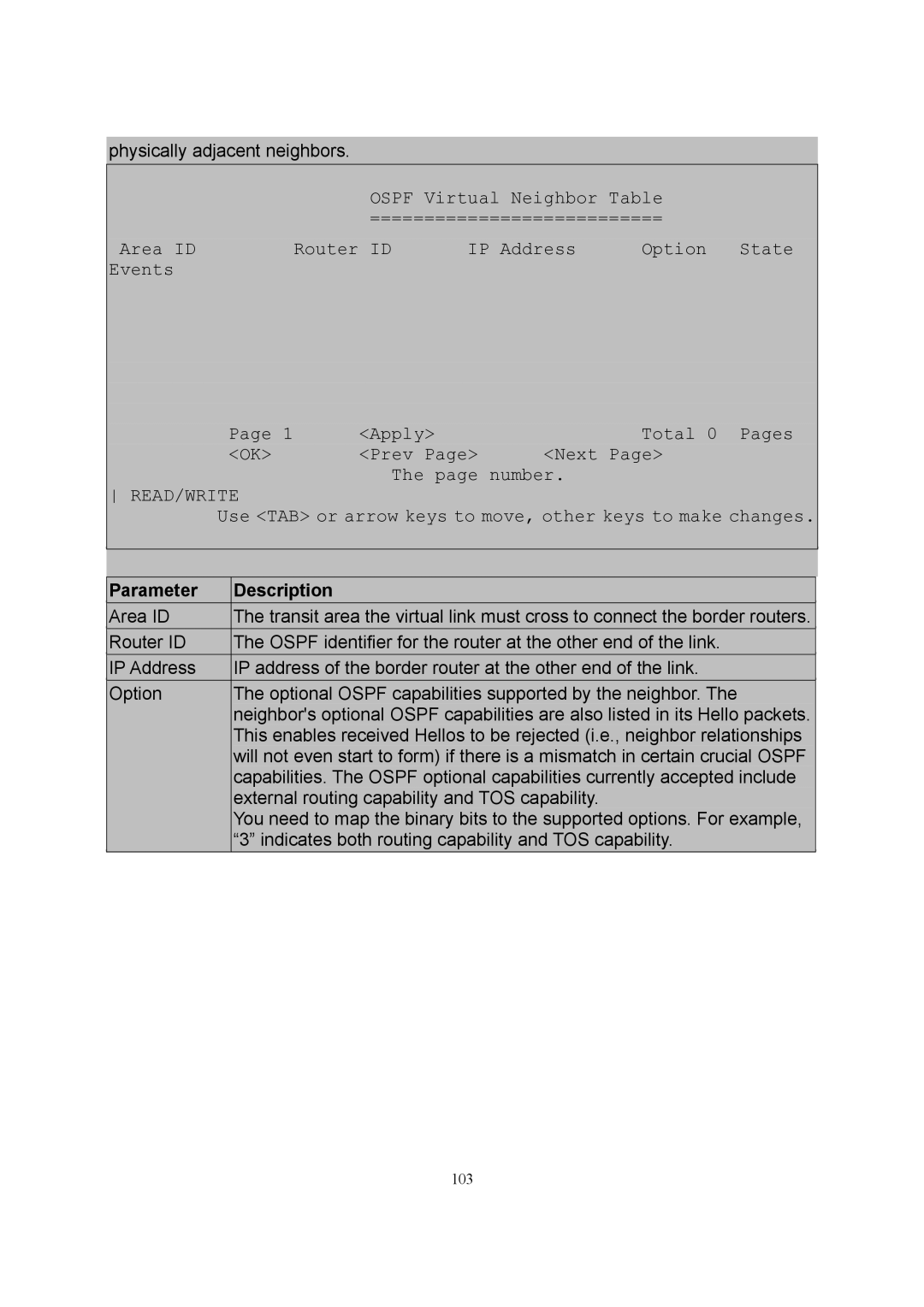
physically adjacent neighbors.
OSPF Virtual Neighbor Table
===========================
Area ID | Router ID | IP Address | Option State |
Events |
|
|
|
Page | 1 | <Apply> | Total 0 Pages |
<OK> |
| <Prev Page> | <Next Page> |
|
| The page number. | |
READ/WRITE
Use <TAB> or arrow keys to move, other keys to make changes.
|
|
|
| Parameter | Description |
| Area ID | The transit area the virtual link must cross to connect the border routers. |
| Router ID | The OSPF identifier for the router at the other end of the link. |
| IP Address | IP address of the border router at the other end of the link. |
|
|
|
| Option | The optional OSPF capabilities supported by the neighbor. The |
|
| neighbor's optional OSPF capabilities are also listed in its Hello packets. |
|
| This enables received Hellos to be rejected (i.e., neighbor relationships |
|
| will not even start to form) if there is a mismatch in certain crucial OSPF |
|
| capabilities. The OSPF optional capabilities currently accepted include |
|
| external routing capability and TOS capability. |
|
| You need to map the binary bits to the supported options. For example, |
|
| “3” indicates both routing capability and TOS capability. |
|
|
|
103
